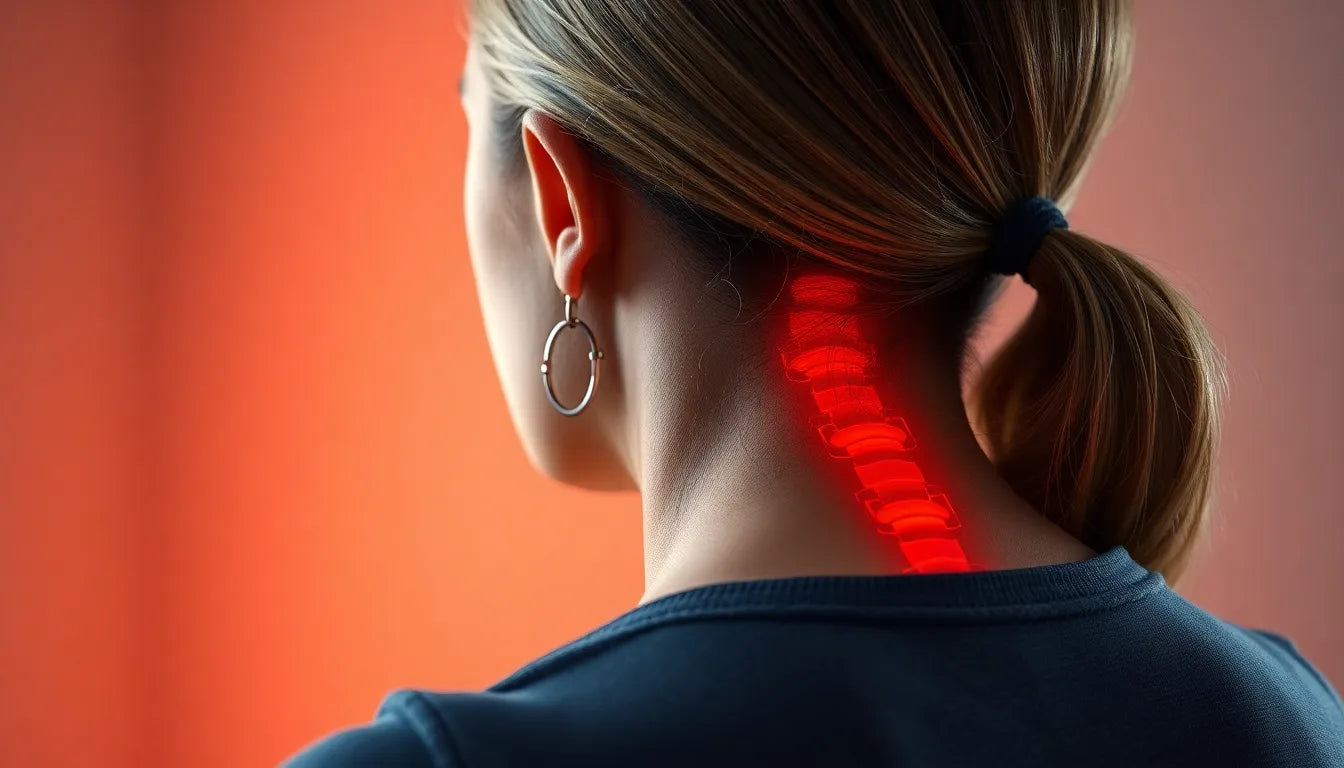Understanding lumbar disc herniation is crucial for those experiencing back pain and seeking effective relief methods. Lumbar disc herniation (LDH) occurs when the soft inner gel of a spinal disc pushes through a crack in the tougher outer layer. This condition primarily affects the lower back, also known as the lumbar region, and can lead to significant discomfort and mobility issues.
Common symptoms of LDH include persistent lower back pain, tingling sensations, and numbness that may extend to the legs or feet. These symptoms arise when the herniated disc presses on nearby nerves, causing irritation and inflammation. As a result, individuals often experience not only pain but also a reduction in their overall quality of life.
the role of exercise in managing lumbar disc herniation
Exercise therapy has emerged as a clinically effective approach to managing lumbar disc herniation. Engaging in regular, targeted exercises can play a pivotal role in alleviating pain and enhancing the quality of life for those affected by LDH. By focusing on strengthening the core muscles and stabilizing the lumbar spine, exercise helps to support the back and reduce the strain on the herniated disc.

Lumbar support belt
Supports and stabilises the lower back, ideal for herniated discs, pain relief, and daily use.
Moreover, improving mobility through exercise can lead to a more active lifestyle, which is beneficial for overall health and well-being. The exercises designed for LDH are not only safe and economical but also serve as a beneficial adjunct to other treatments, such as physical therapy or medication. They provide a non-invasive way to manage symptoms and can be easily incorporated into daily routines.
In the sections that follow, we will explore a series of exercises specifically tailored for those dealing with lumbar disc herniation. These exercises are carefully selected to ensure they are safe and effective, offering a practical solution to help relieve pain and improve function. By integrating these exercises into your routine, you can take proactive steps toward managing your condition and enhancing your quality of life.
evidence-based exercise guidance for lumbar disc herniation
When it comes to managing lumbar disc herniation, exercise therapy is a cornerstone of treatment. However, it's vital to approach these exercises with a focus on safety and gradual progression. Although there isn't a universal agreement on the optimal intensity and frequency of exercises for LDH, the consensus is that consistency and low-impact activities are key to achieving the best outcomes.
Engaging in a routine that includes evidence-based exercises can significantly contribute to pain relief and functional improvement. These exercises are designed to be safe and effective, making them accessible for most individuals dealing with LDH. It's important to remember that while these exercises are beneficial, they should be performed with caution, especially if you're new to physical activity or experiencing significant discomfort.
essential exercises for managing lumbar disc herniation
The following exercises are recommended for strengthening the core, enhancing lumbar stability, and improving flexibility. Each exercise is designed to target specific muscle groups and support the spine, helping to alleviate the symptoms associated with lumbar disc herniation.
partial crunches with bent knees
This exercise strengthens the abdominal and back muscles, providing crucial support for the spine.
Instructions: Lie on your back with your knees bent and feet flat on the floor. Cross your arms over your chest or place your hands behind your head. Gently lift your shoulders off the floor, hold for a second, and then return to the starting position. Repeat for several repetitions, ensuring you maintain a controlled movement.
hamstring stretches
Hamstring stretches gently extend the leg and lower back muscles, reducing tension and improving flexibility.
Instructions: Lie on your back and raise one leg while keeping it straight. Use a towel to gently pull the leg towards you, ensuring the opposite leg remains flat on the ground. Hold the stretch for a few seconds before switching legs.
wall sits
Wall sits are excellent for building strength in the core and legs, providing additional support to the lumbar region.
Instructions: Stand with your back against a wall and slide down into a seated position, ensuring your knees form a 90-degree angle. Hold this position for as long as comfortable, then slowly return to a standing position.
press-up back extensions
Also known as the Cobra pose, this exercise helps relieve disc pressure by gently arching the back.
Instructions: Lie on your stomach with your hands placed under your shoulders. Gently press up, lifting your chest off the ground while keeping your hips down. Hold the position briefly before lowering back down.
bird dog
The Bird Dog exercise enhances lumbar stability through the extension of opposite arm and leg, promoting balance and coordination.
Instructions: Begin on your hands and knees. Extend one arm forward and the opposite leg back, maintaining a straight line from hand to foot. Hold for a few seconds before alternating sides.
knee to chest
This exercise provides a gentle stretch to the back and hips, helping to relieve tension.
Instructions: Lie on your back and bring one knee towards your chest, holding it with both hands. Maintain the stretch for a few seconds before switching to the other leg.
pelvic tilts
Pelvic tilts support flexibility and can help reduce back pain by gently mobilizing the spine.
Instructions: Lie on your back with your knees bent. Tighten your abdominal muscles to flatten your back against the floor, then release. Repeat this movement several times, focusing on a smooth, controlled action.
bridging
Bridging strengthens the posterior chain, which includes the glutes and lower back muscles.
Instructions: Lie on your back with your knees bent. Lift your hips towards the ceiling, hold the position for a few seconds, and then lower back down. Ensure your movements are slow and deliberate.
cat-cow pose
This pose promotes mobility and gentle spinal movement, helping to alleviate stiffness.
Instructions: Begin on your hands and knees. Alternate between arching your back (cat) and dipping your spine (cow), moving slowly and with control.
Incorporating these exercises into your routine can be a powerful tool in managing lumbar disc herniation. However, it's crucial to listen to your body and avoid any movements that cause pain. If you're uncertain about starting an exercise program, consult with a healthcare professional to ensure these exercises are suitable for your condition and fitness level.
ensuring safe practice and effective outcomes
When embarking on an exercise program for lumbar disc herniation, safety should be your top priority. Begin with low-impact, gentle exercises to avoid exacerbating symptoms. High-intensity activities and heavy lifting should be avoided, as they can place undue stress on the spine. Instead, focus on controlled movements that support the spine and enhance core stability.
Consistency is key to reaping the benefits of exercise therapy. Aim to incorporate these exercises into your routine at least three to four times a week. It may take a minimum of two weeks to start noticing improvements, but patience and persistence will yield the best results. Always consult with a healthcare professional before beginning any new exercise regimen, particularly if you have underlying health conditions or are experiencing significant pain.
exploring different exercise methods
Various exercise methods can be effective in managing lumbar disc herniation. The McKenzie method and lumbar stabilization training are two popular approaches. The McKenzie method focuses on specific movements to centralize pain and improve spinal function, while lumbar stabilization training emphasizes core strength and control to support the spine.
Recent research supports the efficacy of exercise therapy in reducing pain and improving quality of life for individuals with lumbar disc herniation. Studies have shown that a tailored exercise program can lead to significant improvements in pain levels, disability, and overall well-being. However, individualization is crucial, as each person's condition and response to exercise may vary.
frequently asked questions
what should I avoid if I have a lumbar disc herniation?
Avoid high-impact activities, heavy lifting, and any exercises that cause pain. It's essential to listen to your body and modify or stop exercises if they exacerbate symptoms.
how often should I do these exercises?
For optimal results, aim to perform these exercises at least three to four times a week. However, it's important to consult with a healthcare provider for personalized advice tailored to your specific needs.
can I do these exercises if I'm in pain?
Mild discomfort during exercise is normal, but if you experience sharp pain, stop immediately and consult a healthcare professional. It's crucial to differentiate between discomfort and pain to prevent further injury.
how long will it take to see improvements?
Some individuals may experience relief within a few weeks of consistent practice. However, long-term benefits are best achieved through regular and sustained exercise over time.
when should I see a doctor?
Seek medical attention if your pain worsens or persists despite exercise, or if you experience new symptoms such as severe numbness, weakness, or loss of bladder or bowel control. These could indicate a more serious condition requiring prompt evaluation.
Incorporating these exercises into your routine can play a crucial role in managing lumbar disc herniation and improving your quality of life. Always prioritize safety and consult with healthcare professionals to ensure the exercises are appropriate for your condition.

Men's Posture Shirt™ - Black
Patented shirt that activates muscles, relieves pain, and improves posture during activity or rest.
Källor
- Spine MD. ”Workouts for Herniated Disc.”
- National Center for Biotechnology Information. ”Exercise Therapy for Lumbar Disc Herniation.”
- ChoosePT. ”Physical Therapy Guide to Herniated Disk.”
- South Shore Orthopedics. ”Lumbar Disc Herniation.”
- National Center for Biotechnology Information. ”Exercise Interventions for Lumbar Disc Herniation.”
- Medical News Today. ”Herniated Disk: Exercises and Treatment.”
- Neurospine. ”Management of Lumbar Disc Herniation.”
- Spine.org. ”Guidelines for Lumbar Disc Herniation.”


















